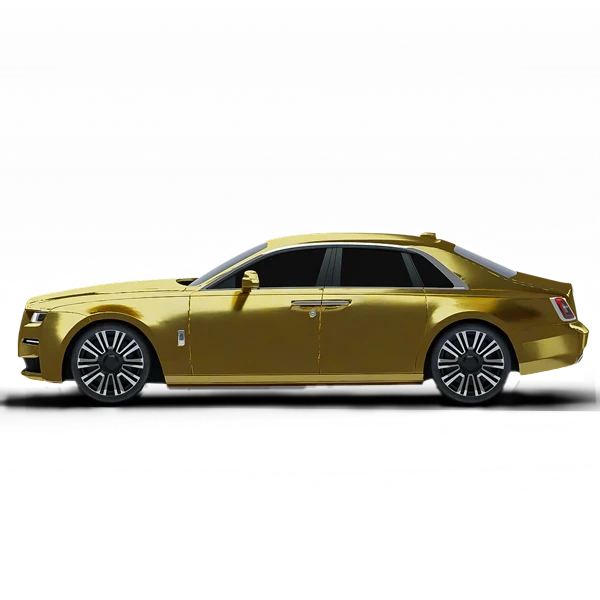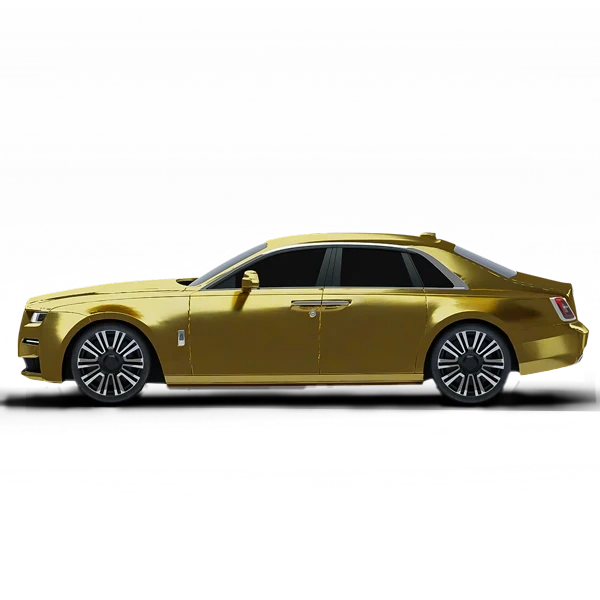Which countries' driving licenses are accepted in Dubai?

Have you ever wondered if your home country's license is valid for use on the dazzling streets of Dubai?
Exploring the enchanting streets of Dubai is a dream for many travelers and expatriates. This guide provides detailed information on the acceptance of international driver’s licenses, ensuring that you have all the necessary information for a seamless driving experience in the heart of the UAE. However, before embarking on your adventure through this desert metropolis, it is essential to familiarize yourself with the local driving regulations, particularly those pertaining to foreign driver’s licenses. The UAE recognizes driver’s licenses from numerous countries across various continents, including Asia, Africa, America, Europe, and Oceania.
Dubai recognizes driver’s licenses from several countries for direct transfer without requiring a road test, assuming the holder is above 19 years of age and their license is valid. Here is an updated list of recognized countries.
👇 Accepted Driver’s licenses in Dubai

Austria

Australia

Bahrain

Belgium

Canada

China

Denmark

Greece

Germany

Finland

France

Japan

italy

Ireland

Hungary

HongKong

HongKong

Luxembourg

Lithuania

latvia

kuwait

Portugal

Poland

oman

Norway

New-Zealand

Singapore

serbia

saudi

Romania

Qatar

Sweden

Spain

South-Korea

South-Africa

Slovakia

USA

UK

Turkey

Switzerland
Additionally, licenses from certain GCC (Gulf Cooperation Council) countries were also recognized.
If you are holding a driver’s license from one of these countries, you typically don’t need an International Driving Permit (IDP) for short-term visits or to rent a car.
However, please note that administrative decisions and agreements can change over time, and as a result, this list may be expanded or modified. It is always advisable to check the official guidelines provided by the Road and Transport Authority (RTA) or consult with a UAE embassy or consulate in your country for the most up-to-date information. The RTA website for Dubai can provide the most accurate and current information.
If you have any further inquiries regarding the regulations and required documents for renting or driving a car in the UAE, please don’t hesitate to reach out to DR Car Rental customer service. It is important to note that you will typically require both the original and a translated copy of your driver’s license.
Getting an IDP (international driving permit) as a visitor of UAE
If you are a visitor in the UAE and you have a valid driving license from your home country, obtaining an International Driving Permit (IDP) can be beneficial when driving in other countries during or after your stay in the UAE. It is generally recommended to obtain the IDP in your home country before traveling. However, if you find yourself in need of an IDP while in the UAE, here are some considerations to keep in mind:
1. Check the requirements: Confirm the specific requirements for obtaining an IDP in the UAE. Contact the local traffic department or the relevant authority to understand the process and necessary documentation.
2. Embassy or consulate: Reach out to your country’s embassy or consulate in the UAE for guidance on obtaining an IDP. They can provide you with the most accurate and up-to-date information regarding the process.
3. Authorized issuing bodies: Identify authorized bodies in the UAE that can issue IDPs. These might include automobile associations or certain government offices. Ensure that you approach authorized entities to obtain a legitimate IDP.
4. Documentation: Prepare the required documentation, which may include your valid driver’s license, passport, photographs, and any additional forms or fees. Make sure to fulfill all the necessary requirements to facilitate the application process.
5. Driving regulations: Familiarize yourself with the driving regulations in the countries you plan to visit. While an IDP can be useful, it is essential to comply with local traffic laws and regulations in each specific country.
Remember, the IDP serves as a translation of your existing driver’s license and should be used in conjunction with it. It is not a standalone document for driving purposes.
For further assistance and detailed information, it is advisable to contact the appropriate authorities or seek guidance from your embassy or consulate in the UAE.
Remember, the primary purpose of the IDP is to act as a translation and validation of your original driving license. It’s not a standalone driving permit, so you’ll always need to present it with your original license.
UAE local traffic rules
Driving Side:
In the United Arab Emirates (UAE), vehicles are driven on the right-hand side of the road. The steering wheel is located on the left-hand side of the vehicle.
Seat Belts:
Wearing seat belts is mandatory for all occupants of a vehicle in the UAE. It is important to ensure that all passengers, including the driver and passengers in the front and back seats, fasten their seat belts at all times while the vehicle is in motion. This rule is enforced to enhance safety and minimize the risk of injuries in case of an accident.
Alcohol:
The UAE has strict regulations regarding alcohol consumption and driving under the influence. It is illegal to drive a vehicle with any level of alcohol in your system. The legal blood alcohol concentration (BAC) limit is 0.00%, meaning that any trace of alcohol in your system while driving can result in penalties, fines, and even imprisonment. It is essential to refrain from consuming alcohol before driving and to designate a sober driver if necessary. Random alcohol tests may be conducted by authorities, and severe penalties can be imposed for violations of these regulations.
Speed Limits:
The UAE has specific speed limits that must be followed while driving. The general speed limits are as follows:
– In urban areas and residential areas: The speed limit is typically 40-60 kilometers per hour (25-37 miles per hour), depending on the specific road and location.
– On highways and major roads: The speed limit is generally 100-120 kilometers per hour (62-75 miles per hour), although it can vary.
– In certain areas, such as construction zones and school zones, lower speed limits may be indicated and must be adhered to.
It is important to pay attention to the posted speed limit signs and adjust your speed accordingly to ensure safe driving and comply with the regulations. Exceeding the speed limit can result in fines, penalties, and potential traffic violations. Additionally, it is always recommended to drive at a safe and appropriate speed based on road and weather conditions.
Roundabouts:
Roundabouts are commonly used in the UAE to manage traffic flow at intersections. Here are some key points regarding roundabouts:
1. Yield to traffic: When approaching a roundabout, you must yield to the vehicles already inside the roundabout. Wait for a safe gap in traffic before entering.
2. Counterclockwise movement: Vehicles in the roundabout move in a counterclockwise direction. Keep to the right side of the roundabout as you navigate through it.
3. Lane discipline: Approach the roundabout in the appropriate lane based on your intended exit. Follow the road markings and signs to choose the correct lane.
4. Use indicators: Signal your intentions using your vehicle’s indicators to communicate to other drivers whether you plan to continue around the roundabout or exit.
5. Give way to pedestrians: Pedestrians have the right of way when crossing at designated crosswalks near roundabouts. Always yield to pedestrians.
6. Exiting the roundabout: When approaching your desired exit, use your indicators to signal your intention to exit. Maintain a safe speed and smoothly exit the roundabout.
It’s important to exercise caution, be patient, and follow the rules of the road when navigating roundabouts to ensure smooth traffic flow and safety for all road users.
Parking:
Parking regulations in the UAE help maintain order and ensure the efficient use of parking spaces. Here are some key points to keep in mind regarding parking:
1. Designated parking areas: Park your vehicle only in designated parking areas such as parking lots, parking garages, or marked parking spaces along the streets. Avoid parking in areas where it is prohibited.
2. Paid parking: In many urban areas, parking spaces may require payment. Look for parking meters or parking ticket machines to pay for the duration of your parking. Follow the instructions provided by the payment system.
3. Parking permits: Some areas may have restricted parking zones or require parking permits. Make sure to comply with any relevant regulations or obtain the necessary permits if you plan to park in such areas.
4. No parking zones: Pay attention to signs and road markings indicating no parking zones. Parking in these areas can result in fines or your vehicle being towed away.
5. Disabled parking: Designated parking spaces for people with disabilities are available. These spaces are strictly for vehicles displaying the appropriate disabled parking permit or sticker. Respect these spaces and do not park there unless you are eligible.
6. Time restrictions: Some parking areas may have time restrictions, especially in busy commercial or residential areas. Observe any time limits indicated to avoid penalties.
7. Private property parking: When parking in private property such as shopping malls or residential complexes, follow the rules and regulations specific to that property. Unauthorized parking may result in your vehicle being towed.
Always be mindful of other road users, pedestrians, and the local parking regulations to ensure a smooth and lawful parking experience. Violations of parking regulations can lead to fines, penalties, or your vehicle being towed.
Pedestrian Crossings:
Pedestrian safety is a priority in the UAE, and there are specific rules and regulations regarding pedestrian crossings. Here are some key points to keep in mind:
1. Zebra Crossings: Zebra crossings are marked with black and white stripes on the road. When approaching a zebra crossing, drivers are required to yield to pedestrians who are crossing or waiting to cross.
2. Pedestrian Signals: Some larger intersections may have pedestrian signals that indicate when it is safe to cross. Pay attention to these signals and follow them accordingly.
3. Crosswalks: Crosswalks are designated areas for pedestrians to cross the road safely. They are often marked with white lines and may have additional signage or traffic lights. Drivers should yield to pedestrians within crosswalks.
4. Pedestrian Bridges and Underpasses: In areas with high pedestrian traffic or busy roads, pedestrian bridges or underpasses may be provided. It is recommended for pedestrians to use these designated facilities to safely cross the road.
5. Pedestrian Right of Way: Pedestrians generally have the right of way when crossing the road at designated crosswalks or intersections. Drivers must yield and allow pedestrians to cross before proceeding.
6. Caution and Courtesy: Even if pedestrians are not crossing at designated areas, it is important for drivers to exercise caution and be prepared to yield to pedestrians when necessary. Pedestrians should also exercise caution and use designated crossings whenever possible.
It is crucial for both drivers and pedestrians to be aware of and respect each other’s rights and safety on the road. Following these rules and practicing courtesy can help ensure the well-being of pedestrians and contribute to overall road safety.
Pedestrian Crossings:
Pedestrian safety is a priority in the UAE, and there are specific rules and regulations regarding pedestrian crossings. Here are some key points to keep in mind:
1. Zebra Crossings: Zebra crossings are marked with black and white stripes on the road. When approaching a zebra crossing, drivers are required to yield to pedestrians who are crossing or waiting to cross.
2. Pedestrian Signals: Some larger intersections may have pedestrian signals that indicate when it is safe to cross. Pay attention to these signals and follow them accordingly.
3. Crosswalks: Crosswalks are designated areas for pedestrians to cross the road safely. They are often marked with white lines and may have additional signage or traffic lights. Drivers should yield to pedestrians within crosswalks.
4. Pedestrian Bridges and Underpasses: In areas with high pedestrian traffic or busy roads, pedestrian bridges or underpasses may be provided. It is recommended for pedestrians to use these designated facilities to safely cross the road.
5. Pedestrian Right of Way: Pedestrians generally have the right of way when crossing the road at designated crosswalks or intersections. Drivers must yield and allow pedestrians to cross before proceeding.
6. Caution and Courtesy: Even if pedestrians are not crossing at designated areas, it is important for drivers to exercise caution and be prepared to yield to pedestrians when necessary. Pedestrians should also exercise caution and use designated crossings whenever possible.
It is crucial for both drivers and pedestrians to be aware of and respect each other’s rights and safety on the road. Following these rules and practicing courtesy can help ensure the well-being of pedestrians and contribute to overall road safety.
Mobile Phones:
In the UAE, using a mobile phone while driving is strictly prohibited unless you have a hands-free device. Here are some key points to remember:
1. Hands-free requirement: It is illegal to hold or use a mobile phone while driving. If you need to make or receive calls, use the phone’s hands-free function or a Bluetooth headset. Ensure that your attention remains on the road while operating any hands-free device.
2. Penalties: Violating the mobile phone usage while driving law can result in fines, black points on your driving record, and potential license suspension. It is important to comply with this regulation for the safety of yourself and others on the road.
3. Emergency situations: If you need to make an emergency call, pull over to a safe location before using your mobile phone. It is always recommended to prioritize safety and find a suitable spot to make or receive calls.
4. Passenger usage: While the driver is prohibited from using a mobile phone, passengers are generally allowed to use their mobile devices. However, it is still advisable to minimize distractions for the driver and practice safe behavior as a passenger.
It is crucial to prioritize road safety and avoid any distractions while driving. Using a mobile phone without a hands-free device can significantly impair your ability to focus on the road and react to potential hazards.
Child Safety:
Ensuring the safety of children while traveling in vehicles is of utmost importance. In the UAE, there are regulations and guidelines in place to safeguard child passengers. Here are some key points regarding child safety:
1. Child Restraint System (CRS): It is mandatory to use an appropriate Child Restraint System when transporting children in vehicles. The type of CRS required depends on the child’s age, height, and weight. This includes rear-facing infant seats, forward-facing child seats, and booster seats.
2. Age and Weight Guidelines: Infants should be placed in rear-facing infant seats until they reach the appropriate weight and height limits specified by the CRS manufacturer. Afterward, they can transition to forward-facing child seats and eventually booster seats based on their growth and development.
3. Seat Placement: Children should generally be seated in the rear seats of the vehicle. Rear seats provide better protection for children compared to the front seats, especially in vehicles equipped with passenger airbags.
4. Installation and Usage: It is crucial to correctly install the CRS and ensure that it is used properly according to the manufacturer’s instructions. This includes securely fastening the child in the CRS with the harness or seatbelt provided.
5. CRS Certification: When purchasing a CRS, ensure that it meets the approved safety standards and regulations. Look for the certification labels or symbols indicating compliance with the relevant safety standards.
6. Supervision: Children should be supervised at all times while traveling in vehicles to ensure their safety and well-being. Avoid leaving children unattended in vehicles, especially in hot weather conditions.
By following these guidelines and regulations, you can significantly enhance the safety of child passengers during travel. It is essential to prioritize their well-being and provide them with appropriate protection while on the road.
Tailgating:
Tailgating refers to the practice of driving too closely behind the vehicle in front of you, leaving insufficient space for safe braking or maneuvering. In the UAE, tailgating is considered dangerous and is strictly discouraged. Here are some key points regarding tailgating:
1. Maintain a safe following distance: It is important to maintain a safe distance from the vehicle in front of you. The recommended following distance is at least a two-second gap in normal driving conditions. Increase the following distance during adverse weather or road conditions.
2. Reaction time: Leaving enough space between vehicles allows for an adequate reaction time in case the vehicle in front brakes suddenly or encounters an obstacle. This helps prevent rear-end collisions.
3. Avoid aggressive driving: Tailgating is often associated with aggressive driving behavior. It is important to stay calm, patient, and maintain a reasonable distance from the vehicle in front. Aggressive driving can lead to accidents and jeopardize road safety.
4. Allow overtaking: If a vehicle behind you is signaling to overtake, it is courteous to create a safe space by moving to the right lane. This helps maintain a smooth flow of traffic and reduces the likelihood of tailgating.
5. Use rearview mirrors: Regularly check your rearview and side mirrors to be aware of the vehicles behind you. If you notice a vehicle tailgating you, it is best to maintain your speed and avoid engaging in aggressive maneuvers.
6. Report dangerous driving: If you encounter a persistent tailgater or witness dangerous driving behavior, you can report it to the relevant authorities. Provide them with accurate information such as the vehicle’s license plate number, location, and a description of the incident.
By maintaining a safe following distance and practicing courteous driving behavior, you contribute to safer roads and help prevent accidents caused by tailgating.
Indicators:
Indicators, also known as turn signals or blinkers, are essential safety devices in vehicles that communicate your intentions to other road users. Here are some key points regarding the use of indicators:
1. Signaling Turns: Before making a turn, whether it’s a left turn or a right turn, you should always use your vehicle’s indicators to signal your intention. Activate the indicator in the corresponding direction a few seconds before you plan to initiate the turn.
2. Lane Changes: When changing lanes, it is crucial to use your indicators to signal your intention to other drivers. Activate the indicator in the direction of the lane you plan to move into, allowing sufficient time for other drivers to adjust their speed or position if needed.
3. Merging and Exiting: When entering or exiting a highway, using your indicators is essential to alert other drivers of your intentions. Activate the indicator in the direction you plan to merge or exit, giving ample time for other drivers to adjust their speed and accommodate your maneuver.
4. Roundabouts and Intersections: Indicators play a crucial role when navigating roundabouts and intersections. Use your vehicle’s indicators to communicate your intended exit or direction to other drivers and pedestrians.
5. Canceling Indicators: After completing your turn or lane change, remember to cancel or turn off your indicators. Leaving your indicators on unnecessarily can confuse other road users.
6. Check Mirrors and Blind Spots: Before signaling a turn or lane change, always check your rearview and side mirrors and glance over your shoulder to check your blind spots. This ensures that it is safe to proceed and that no vehicles or obstacles are in your intended path.
Using indicators properly is essential for safe and effective communication on the road. It helps other drivers anticipate your actions, reduces the risk of collisions, and promotes overall road safety.
Roundabout Flashing:
If you are referring to “roundabout flashing” in the context of driving, it typically means using the vehicle’s hazard lights or emergency flashers while navigating a roundabout. However, it’s important to note that the use of hazard lights in a roundabout can vary depending on local regulations and practices. Here are some general guidelines:
1. Check local regulations: Different countries or regions may have specific rules regarding the use of hazard lights in a roundabout. It’s important to familiarize yourself with the local traffic laws and regulations to ensure compliance.
2. Hazard lights as a warning: In some cases, drivers may use hazard lights when approaching and entering a roundabout to indicate their intention to other road users. This can serve as a cautionary signal to nearby vehicles that the driver is slowing down or preparing to enter the roundabout.
3. Be cautious: While some drivers may use hazard lights in a roundabout, it’s not a universally accepted practice. In some places, using hazard lights in a roundabout may cause confusion or be interpreted as a signal that the vehicle is stopped or experiencing an issue. This can lead to misunderstandings and potentially unsafe situations.
4. Follow local practices: When driving in a specific area, observe the behavior of other drivers to understand the local practices regarding hazard light usage in roundabouts. If you notice that the majority of drivers are not using hazard lights, it’s generally best to follow suit.
In summary, the use of hazard lights in roundabouts can vary, and it’s important to understand the local regulations and norms. When in doubt, it’s usually safer to rely on proper lane positioning, signaling with your vehicle’s indicators, and adhering to the standard rules of roundabout navigation.
Radar and Cameras:
Radar and cameras play significant roles in traffic enforcement and monitoring. Here are some key points regarding their use:
1. Speed Detection: Radar technology is commonly used by law enforcement to detect and monitor vehicle speeds. Radar devices emit radio waves that bounce off moving vehicles, allowing officers to measure the speed of the targeted vehicle. This information helps enforce speed limits and promote road safety.
2. Red Light Cameras: Red light cameras are installed at intersections to capture images or videos of vehicles that run red lights. These cameras work by using sensors or triggers to detect vehicles entering an intersection after the traffic signal has turned red. Violators can be issued traffic citations based on the evidence recorded by these cameras.
3. Traffic Surveillance Cameras: Traffic surveillance cameras are strategically positioned to monitor traffic flow, observe road conditions, and enhance overall safety. These cameras are typically used by transportation authorities to monitor traffic patterns, identify congestion areas, and respond to incidents promptly.
4. Toll Collection Systems: Cameras are often integrated into toll collection systems to capture images of license plates or vehicle transponders. These images are used to link the vehicle to the registered owner’s account for automated toll payment.
5. Automated Enforcement Systems: Cameras can also be used for automated enforcement of various traffic violations, such as speeding or running red lights. These systems capture images or record videos of violations, which are then reviewed by authorities, and citations may be issued accordingly.
It’s important to note that the specific use of radar and cameras, as well as the regulations governing their usage, can vary between jurisdictions. Local traffic laws and regulations will determine how these technologies are employed and how violations are enforced.
Overall, radar and cameras contribute to promoting traffic safety by encouraging compliance with traffic laws, detecting violations, and providing valuable data for traffic management and planning.
Tinting:
Tinting refers to the process of applying a film or coating to the windows of a vehicle to reduce the amount of light and heat that passes through. Here are some key points regarding window tinting:
1. Privacy and Glare Reduction: One of the primary reasons people choose to tint their vehicle windows is to enhance privacy and reduce glare from the sun or headlights of other vehicles. Tinted windows can provide a level of privacy by making it more difficult for people outside the vehicle to see inside.
2. Heat Reduction: Another benefit of window tinting is its ability to reduce the amount of heat that enters the vehicle through the windows. Tinted windows can help keep the interior cooler, especially in hot climates, by blocking a portion of the sun’s heat.
3. UV Radiation Protection: Window tinting can also help block a significant amount of the sun’s ultraviolet (UV) radiation. UV rays can cause damage to the skin and contribute to fading or deterioration of the vehicle’s interior. Tinted windows can help mitigate these effects by reducing the amount of UV radiation that enters the vehicle.
4. Legal Regulations: It’s important to be aware of the legal regulations regarding window tinting in your jurisdiction. Different countries, states, or regions have specific laws that govern the allowable levels of tint darkness or visible light transmission (VLT) for different windows of a vehicle. Exceeding the legal limits can result in fines or other penalties.
5. Professional Installation: To ensure proper installation and adherence to legal requirements, it is recommended to have window tinting performed by a professional. They can guide you on the appropriate tint options that comply with the regulations and provide a quality installation.
When considering window tinting, it’s essential to research and understand the local laws and regulations specific to your area. This will help ensure that you comply with the legal requirements while enjoying the benefits that tinted windows can offer in terms of privacy, glare reduction, heat control, and UV protection.
Emergency Vehicles:
Emergency vehicles play a critical role in responding to emergencies and providing assistance in various situations. Here are some key points regarding emergency vehicles:
1. Types of Emergency Vehicles: Emergency vehicles include ambulances, fire trucks, police cars, and other specialized vehicles used by emergency services. Each type of vehicle serves a specific purpose and is equipped with specialized equipment and markings to aid in their identification.
2. Emergency Lights and Sirens: Emergency vehicles are equipped with distinctive lights and sirens to alert other road users and gain priority on the road. The lights typically include flashing red, blue, or a combination of both, while the sirens emit loud and distinct sounds. When approaching, emergency vehicles may activate their lights and sirens to request the right of way and prompt other drivers to yield and make way.
3. Yielding Right of Way: When you hear or see an emergency vehicle approaching with lights and sirens activated, it is important to yield the right of way and make way for the vehicle to pass. Safely move your vehicle to the side of the road or pull over to allow the emergency vehicle to proceed. Avoid blocking intersections or impeding their path.
4. Following Instructions: In some situations, emergency vehicles may be directed by emergency personnel or traffic control authorities. It is important to follow their instructions promptly and cooperate to ensure a smooth and efficient flow of traffic during emergency situations.
5. Stay Calm and Predictable: When encountering an emergency vehicle, it is important to remain calm and drive predictably. Abrupt or erratic maneuvers can create hazards and increase the risk of accidents. Maintain a safe speed, use your indicators appropriately, and yield the right of way when required.
6. Awareness and Caution: It is crucial to be aware of your surroundings and constantly check for approaching emergency vehicles, especially in areas with heavy traffic or intersections. Adjust your driving behavior accordingly and be prepared to yield as necessary.
7. Legal Obligations: Laws and regulations regarding yielding to emergency vehicles may vary between jurisdictions. Familiarize yourself with the specific rules and requirements in your area to ensure compliance and promote road safety.
By understanding and adhering to the proper protocols when encountering emergency vehicles, you contribute to the effective response and assistance provided by emergency services while ensuring the safety of all road users.
Jaywalking:
Jaywalking refers to the act of crossing a street or roadway in a manner that disregards traffic laws and regulations. It typically involves crossing at a location other than a designated crosswalk or intersection, or crossing against traffic signals or pedestrian signals. Here are some key points regarding jaywalking:
1. Legal Regulations: Jaywalking laws and regulations vary between jurisdictions. In many places, crossing a street outside of designated areas or against traffic signals is considered illegal and may result in fines or penalties. However, there are also locations where jaywalking is not explicitly prohibited or where regulations are more lenient.
2. Pedestrian Safety: The primary concern with jaywalking is the potential risk it poses to pedestrian safety. Crossing a street at non-designated locations or against traffic signals can increase the likelihood of accidents with vehicles. Drivers may not anticipate pedestrians crossing in unexpected locations, leading to collisions and injuries.
3. Importance of Crosswalks and Signals: Crosswalks and traffic signals are designed to facilitate safe pedestrian crossings. Using designated crosswalks and waiting for pedestrian signals to indicate it is safe to cross can significantly reduce the risk of accidents. It is generally recommended to utilize crosswalks whenever they are available and to obey traffic signals and pedestrian signals.
4. Pedestrian Responsibility: Pedestrians also have a responsibility to ensure their safety and the safety of others. This includes using crosswalks whenever possible, waiting for signals to indicate it is safe to cross, and being aware of their surroundings. Pedestrians should exercise caution and make themselves visible to drivers.
5. Driver Awareness: Drivers also play a crucial role in pedestrian safety. They should remain vigilant and watch for pedestrians, especially in areas where jaywalking is common. Yielding to pedestrians in designated crosswalks and adhering to traffic laws contribute to creating a safer environment for pedestrians.
It’s important to remember that laws and regulations regarding jaywalking can differ between jurisdictions, so it’s always advisable to familiarize yourself with the specific rules and guidelines in your area. Prioritizing pedestrian safety and following designated crossing areas and traffic signals are essential practices for both pedestrians and drivers to promote safe and efficient road usage.
Conclusion
This is a general overview, and there might be region-specific rules or updates. Always consult local guidelines or the UAE’s official road and transport authority for the most up-to-date and comprehensive information. If you’re a visitor or expatriate, it’s also recommended to familiarise yourself with these rules to ensure safe driving during your stay.
Call : +971585300053
Whats app : +971585300053
Website : www.drcars.ae






































 Rolls Royce
Rolls Royce Lexus
Lexus Lamborghini
Lamborghini Porsche
Porsche Ferrari
Ferrari Toyota
Toyota Mercedes Benz
Mercedes Benz BMW
BMW Land Rover
Land Rover Bentley
Bentley Nissan
Nissan Cadillac
Cadillac Audi
Audi Chevrolet
Chevrolet GMC
GMC Hyundai
Hyundai Kia
Kia Mazda
Mazda